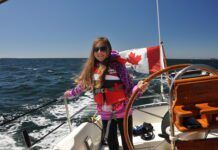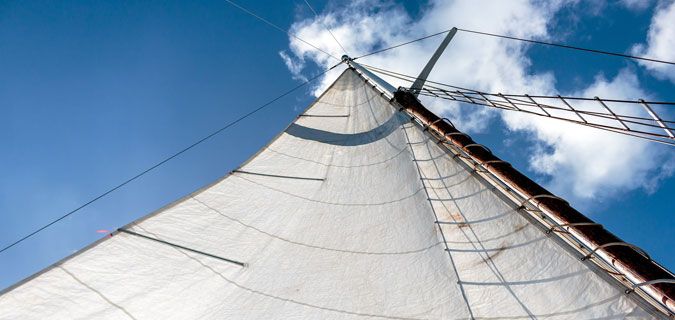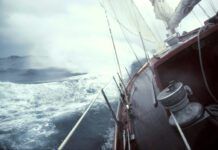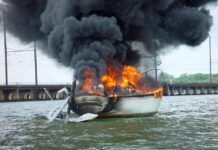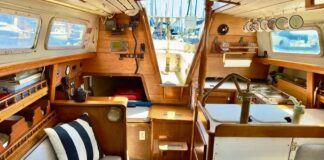Excerpted from The Art of Seamanship by Ralph Naranjo
Two important pieces of gear help in spotting buoys.
Spotlights. A bright spotlight and a good pair of 7 x 50 binoculars make nighttime buoy spotting much easier. Your spotlight should cast a narrow, highly concentrated beam. Although not as portable as battery-operated units, plug-in or permanently connected 12-volt spotlights yield maximum brightness each time the unit is turned on and are usually more powerful than portable alternatives. Almost all navigation aids are equipped with reflective paint, tape, or other means of improving their reflectivity when illuminated by a spotlight. For a spotlight to be effective, it must be bright and free from any floodlight effect. If part of the light beam disperses at a wide angle, the ambient moisture in the surrounding air greatly reduces the effectiveness of the spotlight.
Binoculars. Unlike abuse-resistant boating gear such as winch handles, binoculars don’t take to being bumped and dropped. You want to protect this precision optical instrument from falling off the chart table or being stuck in a salt-encrusted corner of the cockpit. Falls and neglect can damage even the best rubber-coated, water-resistant binoculars. To retain a high performance level, keep the optics clean and free from the misalignment blunt trauma can cause. Binoculars belong in an easy-access box, hung around a user’s neck, or in hand at eye level. Adhere to this “three-places rule,” and when they’re not in use, keep the lens caps on. You’ll extend the life and maintain the operational efficiency of this essential piece of equipment. The same goes for a night-vision monocular that can extend even further a sailor’s visual acuity in darkness.
For additional advice and detail on navigation while under sail, purchase Ralph Naranjo’s The Art of Seamanship from Practical Sailor.



















